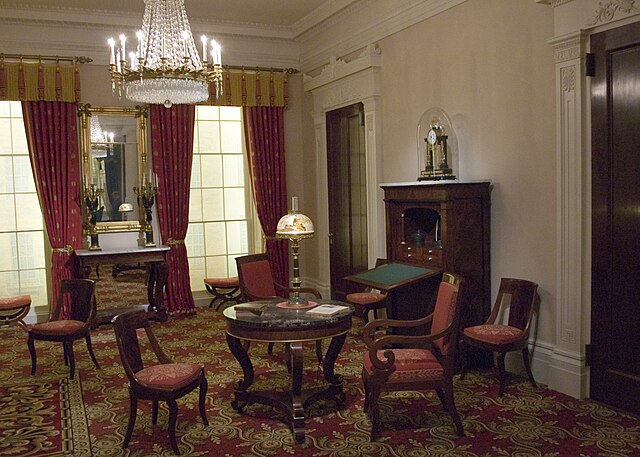A parlour is a reception room or public space. In medieval Christian Europe, the "outer parlour" was the room where the monks or nuns conducted business with those outside the monastery and the "inner parlour" was used for necessary conversation between resident members. In the English-speaking world of the 18th and 19th century, having a parlour room was evidence of social status.
A Greek Revival parlour in the Metropolitan Museum of Art
Makart-style parlour, by Georg Janny
A drawing room is a room in a house where visitors may be entertained, and an alternative name for a living room. The name is derived from the 16th-century terms withdrawing room and withdrawing chamber, which remained in use through the 17th century, and made their first written appearance in 1642. In a large 16th- to early 18th-century English house, a withdrawing room was a room to which the owner of the house, his wife, or a distinguished guest who was occupying one of the main apartments in the house could "withdraw" for more privacy. It was often off the great chamber and usually led to a formal, or "state" bedroom.
Reconstructed drawing room of Sir William Burrell; part of the Burrell Collection in Glasgow, Scotland
Middle-class drawing room in Blackheath, London, 1841, painted by James Holland
An Indian drawing room





